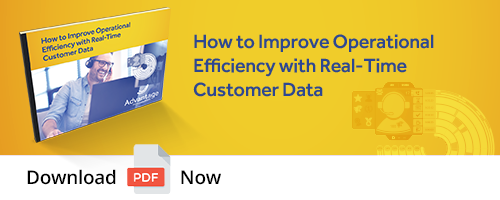It’s one thing to go through the process of determining that you need to outsource your customer service program to a contact center and getting buy-in from your upper management, it’s a completely different thing to find the right outsourced partner.
Selecting the right partner for your organization is crucial. Your contact center will be an extension of your brand, so you need to find a vendor that has the expertise, technologies and experience to help you achieve your business goals.
For a seamless selection process that helps you find the right outsourced contact center, it’s crucial you create a request for proposal (RFP).
In this blog, we look at what an RFP actually is, why it’s a crucial aspect of choosing the right outsourced contact center and how you can build your very own RFP that helps you achieve customer service success.
What is an RFP and why is it important?
A request for proposal is a business document used by large organizations to elicit bids from potential vendors in an effort to procure commodities, services or valuable assets. In your case, an RFP will be created to elicit bids from contact centers who will submit business proposals on how they will help your organization meet its customer service goals.
An RFP is your company’s chance to provide potential vendors with a structured overview of your company, what you are looking to accomplish and the selection criteria you will use to select your contact center partner.
An RFP typically includes:
- A background on your organization.
- A description of the solution/project that you are looking to outsource.
- The scope of work and what specific customer service goals you are aiming to achieve.
- A description of the technical requirements or technologies that will be needed.
- Your company’s budget.
- The criteria that you will use to rate and select your contact center partner.
So, why is an RFP important?
The RFP process is the opportunity for your company to solicit bids from contact centers and then identify which one is best qualified to complete the project or deliverables that you are looking to achieve.
An RFP makes it easier for your organization to compare the skills, expertise, experience and rates of your potential outsourced contact center partner. The result? A good RFP will help your organization secure offers from the right vendor.
A 4-step process to creating the ultimate contact center RFP
With the above in mind, how can your business make sure it has built an RFP that gets the right information to ensure you’re able to select the best outsourced contact center for your unique needs?
We’ve created a four-step process to help you build the perfect RFP.
1 - Define your organization
The first step of any RFP is to give your potential future partner an overview of your company. You want to set the stage of what your brand is all about, what makes you different from your competitors and what you are trying to achieve.
This is the part of your RFP where you define:
- What your company is and what industry you work in.
- Who, where and what your customers are all about.
- Your current customer service processes, and what is and isn’t currently working.
- Why you want to partner with an outsourced contact center
2 - Determine your objectives
Now your potential vendors know what your organization is and who your customers are, it’s time to detail the specific goals you are trying to achieve. This section should also include the technical and performance requirements that your vendors would be expected to fulfill.
Keep in mind some of the key performance indicators and metrics - such as average handle time, customer satisfaction, first-call resolution or net promoter score - that you might be trying to achieve as part of your contact center outsourcing program.
3 - Ask your potential partners the right questions
In this section of your RFP, include questions that will give your business a good idea of your potential contact center’s capabilities. This should include the experience they have, the technologies they use, how they design their programs, how they monitor and improve agent performance, how much their programs cost and much more.
Questions that will give you a good idea of which vendor to work with could include:
- How many call centers does the contact center operate?
- What do they do to ensure a high-quality company culture?
- What technologies do they use to deliver results?
- How do you train agents to work on specific brands?
- What languages do you currently support?
- What is your average length of client relationships?
4 - Provide a timeline for the entire RFP process
Last but not least, the RFP process takes time. That’s why it’s important to clearly lay out your timeline so vendors have a sufficient amount of time, and understanding, to do a good job of answering your questions.
The typical RFP timeline should be around three weeks, and could follow a structure like this:
- Day one: RFP issued.
- Day four: The deadline for intent to reply.
- Day six: Deadline for any questions that vendors have in regards to the RFP.
- Day 10: Answers to your vendor questions are sent back to them.
- Day 21: RFP submissions are due.
Are you interested in learning more about the RFP process, or simply want more information about how outsourced contact centers work? Get in touch with Advantage Communications today. We would love to answer your questions.





